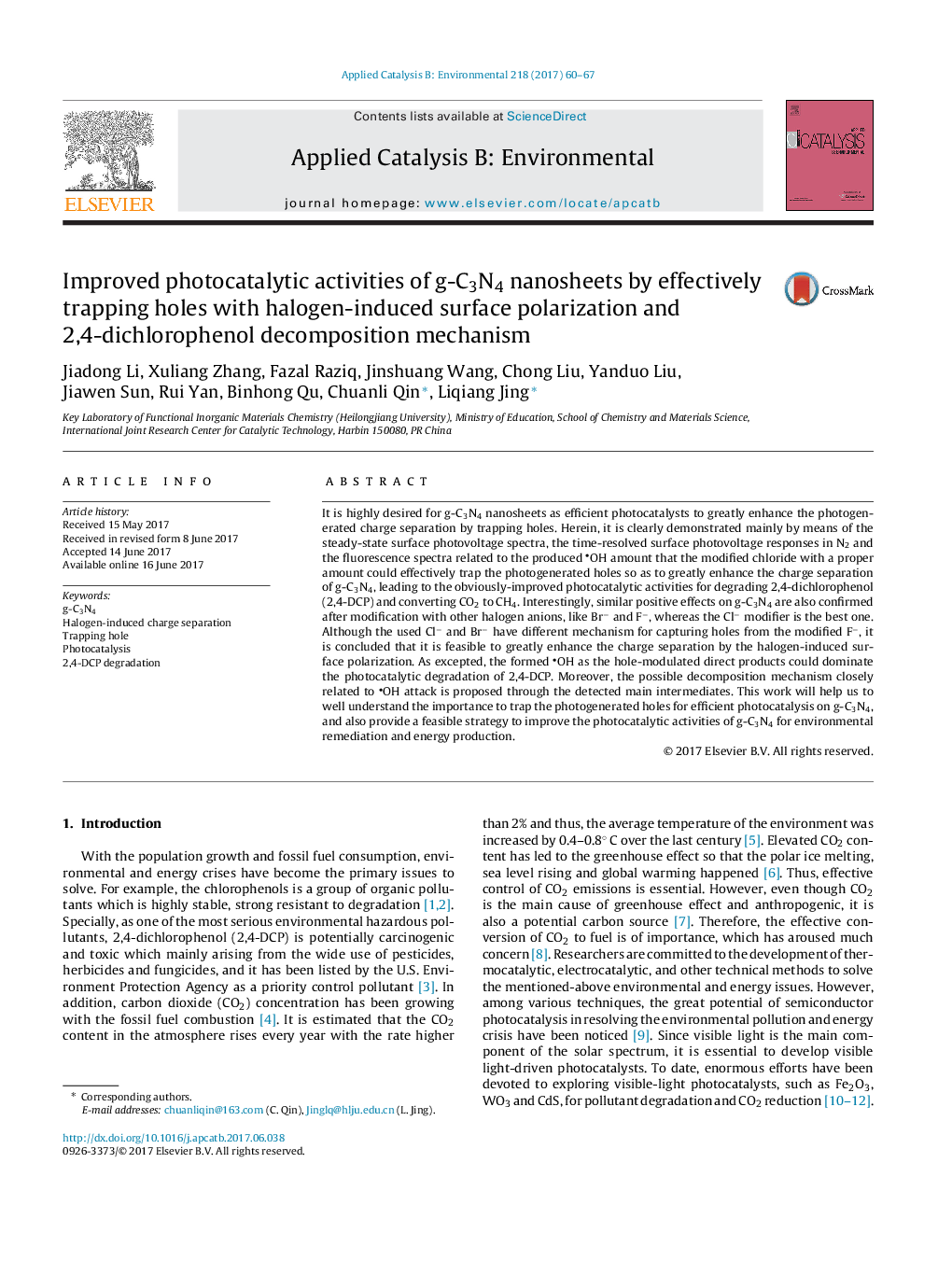| کد مقاله | کد نشریه | سال انتشار | مقاله انگلیسی | نسخه تمام متن |
|---|---|---|---|---|
| 6453696 | 1418802 | 2017 | 8 صفحه PDF | دانلود رایگان |

- Modified chloride could trap photogenerated holes so as to enhance charge separation of g-C3N4.
- Enhanced charge separation leads to improved photocatalytic activities for 2,4-DCP degradation of g-C3N4.
- Similar positive effects on g-C3N4 are confirmed after modification with Brâ and Fâ to Clâ.
- Modified Clâ and Brâ display different mechanism to trap holes from modified Fâ.
- Formed OH as hole-modulated products could dominate degradation of 2,4-DCP on modified g-C3N4.
It is highly desired for g-C3N4 nanosheets as efficient photocatalysts to greatly enhance the photogenerated charge separation by trapping holes. Herein, it is clearly demonstrated mainly by means of the steady-state surface photovoltage spectra, the time-resolved surface photovoltage responses in N2 and the fluorescence spectra related to the produced OH amount that the modified chloride with a proper amount could effectively trap the photogenerated holes so as to greatly enhance the charge separation of g-C3N4, leading to the obviously-improved photocatalytic activities for degrading 2,4-dichlorophenol (2,4-DCP) and converting CO2 to CH4. Interestingly, similar positive effects on g-C3N4 are also confirmed after modification with other halogen anions, like Brâ and Fâ, whereas the Clâ modifier is the best one. Although the used Clâ and Brâ have different mechanism for capturing holes from the modified Fâ, it is concluded that it is feasible to greatly enhance the charge separation by the halogen-induced surface polarization. As excepted, the formed OH as the hole-modulated direct products could dominate the photocatalytic degradation of 2,4-DCP. Moreover, the possible decomposition mechanism closely related to OH attack is proposed through the detected main intermediates. This work will help us to well understand the importance to trap the photogenerated holes for efficient photocatalysis on g-C3N4, and also provide a feasible strategy to improve the photocatalytic activities of g-C3N4 for environmental remediation and energy production.
Halogen-induced surface polarization could trap holes so as to improve photocatalytic activities of g-C3N4 for 2,4-DCP degradation and CO2 conversion.164
Journal: Applied Catalysis B: Environmental - Volume 218, 5 December 2017, Pages 60-67